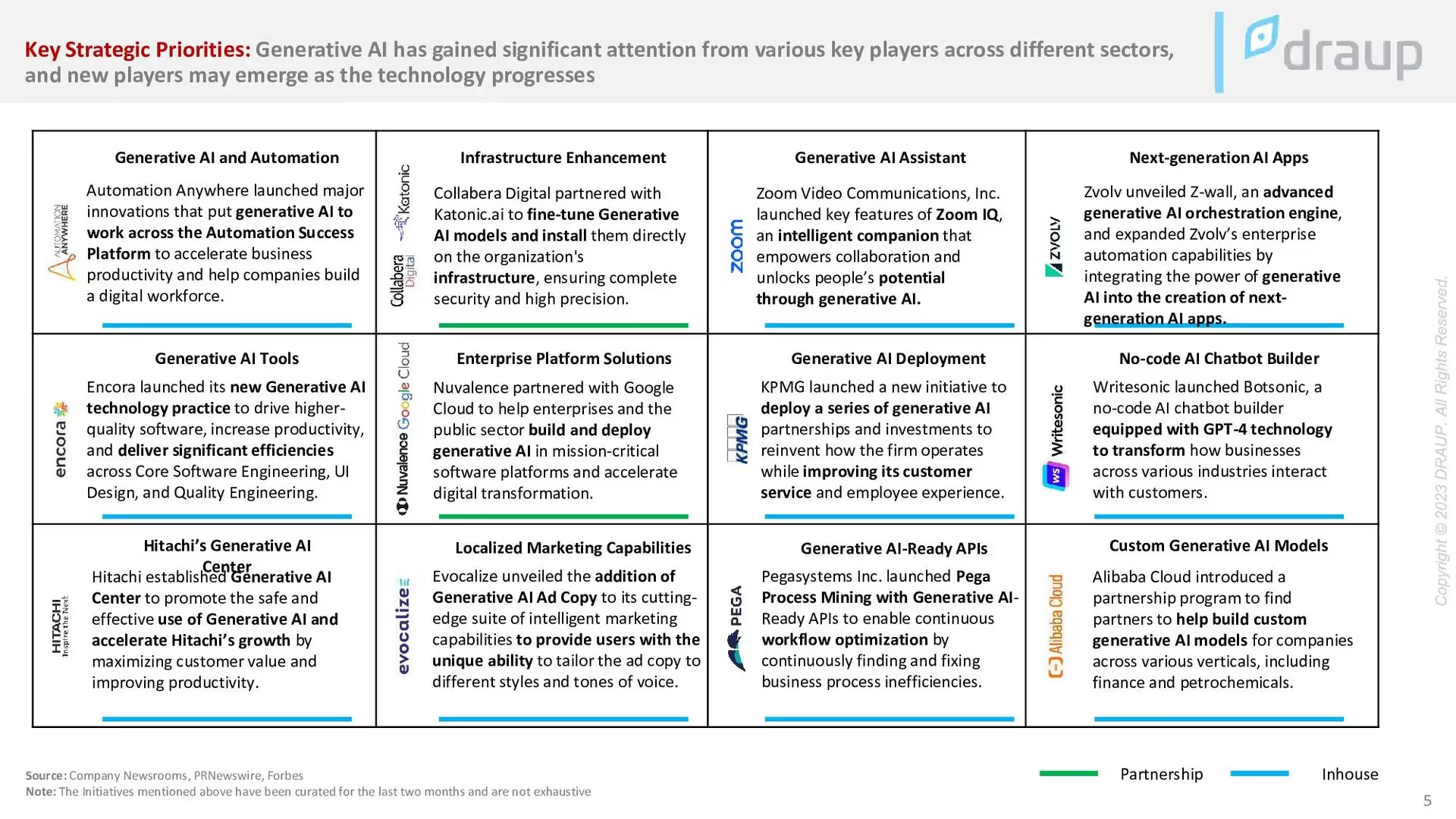The Generative AI Landscape: A Comprehensive Ecosystem Overview
Generative AI is an AI that can create new content such as text, images, audio, and video. It accomplishes this by learning patterns from existing data and then applying that information to generate new and distinct outputs.
Because Generative AI can produce highly realistic and sophisticated content that replicates human ingenuity, it is a valuable tool across industries, including gaming, entertainment, and product design.
Generative AI is spawning a complete ecosystem, from hardware providers to application developers, that will aid in realizing its commercial potential.
Fundamentals of Generative AI Models and the Demand
Generative AI comprises various models, including Autoregressive Models, Variational Autoencoders (VAEs), Generative Adversarial Networks (GANs), and Flow-based Models.
Each model has unique strengths and weaknesses, making them suitable for different tasks. For instance, GANs are excellent at generating realistic images, while VAEs are more focused on latent space representations.
The increased demand for advanced manufacturing with complicated designs, as well as the requirement to minimize size while boosting automated performance, will drive the worldwide generative AI market forward.
The Generative AI market was estimated at $ 14.21 Billion in 2023 and is expected to grow at a CAGR of 34.09% to reach $ 110.8 Billion by 2030.
Investor Interest in Generative AI
From US$ 200 Mn in 2020 to US$ 2.6 Bn by 2022, VC firms spent over US$ 2.4 Bn on Generative AI solutions. As of the end of 2022, OpenAI s the most valued company at US$ 20 Bn.
Let us look at the revenue models:
- Granting technology licenses to other companies or institutions to improve their goods or services.
- Selling the outputs of the AI system to users so they can utilize the generated text, photos, or videos for various applications. Granting clients
- subscription-based access to the AI system so they can utilize it to produce their results. Using the AI system to boost a business’s current goods or services’
- efficacy or efficiency, then charging clients for those improved offerings
- Launching new goods or services that make use of the AI system’s capabilities and selling them straight to custom
Industry Use Cases of Generative AI
Generative AI can explore the design possibilities of an object to discover the best fit. It not only augments and accelerates design in many sectors, but it can ‘invent’ unique designs or objects.
The effects of Generative AI are already being felt in marketing and media. By 2025, 30% of large firms’ outbound marketing messages will be synthetically generated, up from less than 2% in 2022.
Let us look at some use cases for Generative AI in various industries:
1. Drug development: In 2010, the average cost of bringing a medicine to market was US$ 1.8 Bn, with drug discovery expenditures accounting for nearly a third of that total.
The discovery process took anywhere between three and six years.
In just a few months, pharma has utilized Generative AI to develop medications for many purposes, providing considerable cost-saving prospects and timelines associated with drug research.
– Case in point, to offer guidance as it investigates quantum methods to medication development, Moderna partnered with IBM to invest in Generative AI.
2. Retail operations: Retailers may employ Generative AI to build accurate 3D models of their goods that can be used to see how their displays and shop layouts will look.
Retailers may differentiate their products from those of their rivals and improve the consumer experience by employing Generative AI algorithms to produce distinctive products that are specifically suited to each customer’s tastes.
– For example, Shopify’s AI-powered Shopify Magic automatically creates product descriptions for online retailers to save time and boost sales.
3. Chip design: Reinforcement learning, a machine learning technique, can be used by Generative AI to optimize component arrangement in semiconductor chip design, cutting the time required for product development from weeks with human experts to hours.
4. Material science: Generative AI is influencing the automotive, aerospace, defense, medical, electronics, and energy industries.
Instead of depending on the chance to identify a material that has the desired attributes, the technique, known as inverse design, describes the properties needed and finds materials likely to have them.
– For example, finding materials that are more conductive or have a stronger magnetic pull, or for use cases where materials must be corrosion-resistant.
5. Parts design: Several sectors, such as manufacturing, automotive, aerospace, and defense, may develop components that are optimized for performance, materials, and manufacturing.
– For instance, automakers can employ generative design to develop lighter designs, furthering their efforts to improve the fuel efficiency of their vehicles.
Key Focus & Opportunity Arenas

The service provider’s target areas are a reflection of continuing research, development, and application work in Generative AI to enhance quality and usability in the real world across a range of domains and applications.
Generative AI is a fast-paced and intriguing sector with the potential to revolutionize knowledge labor in terms of efficiency and efficacy.
The research and infographic presented above are by no means comprehensive; additional businesses, technology, and new ones are always developing.
We will elaborate on value-creation opportunities in specific sectors and job functions as well as the potential effects of generative AI on the world economy and the nature of work in the coming weeks and months.
Read Draup’s comprehensive analysis of the Generative AI ecosystem. It provides an overview of the market, including market players’ insights, service providers’ strategies, significant sectors, and associated use cases.
Draup for Sales provides industry intelligence and real-time sales signals to sales teams so they may progress various initiatives and uncover niche outsourcing opportunities.






.svg)
